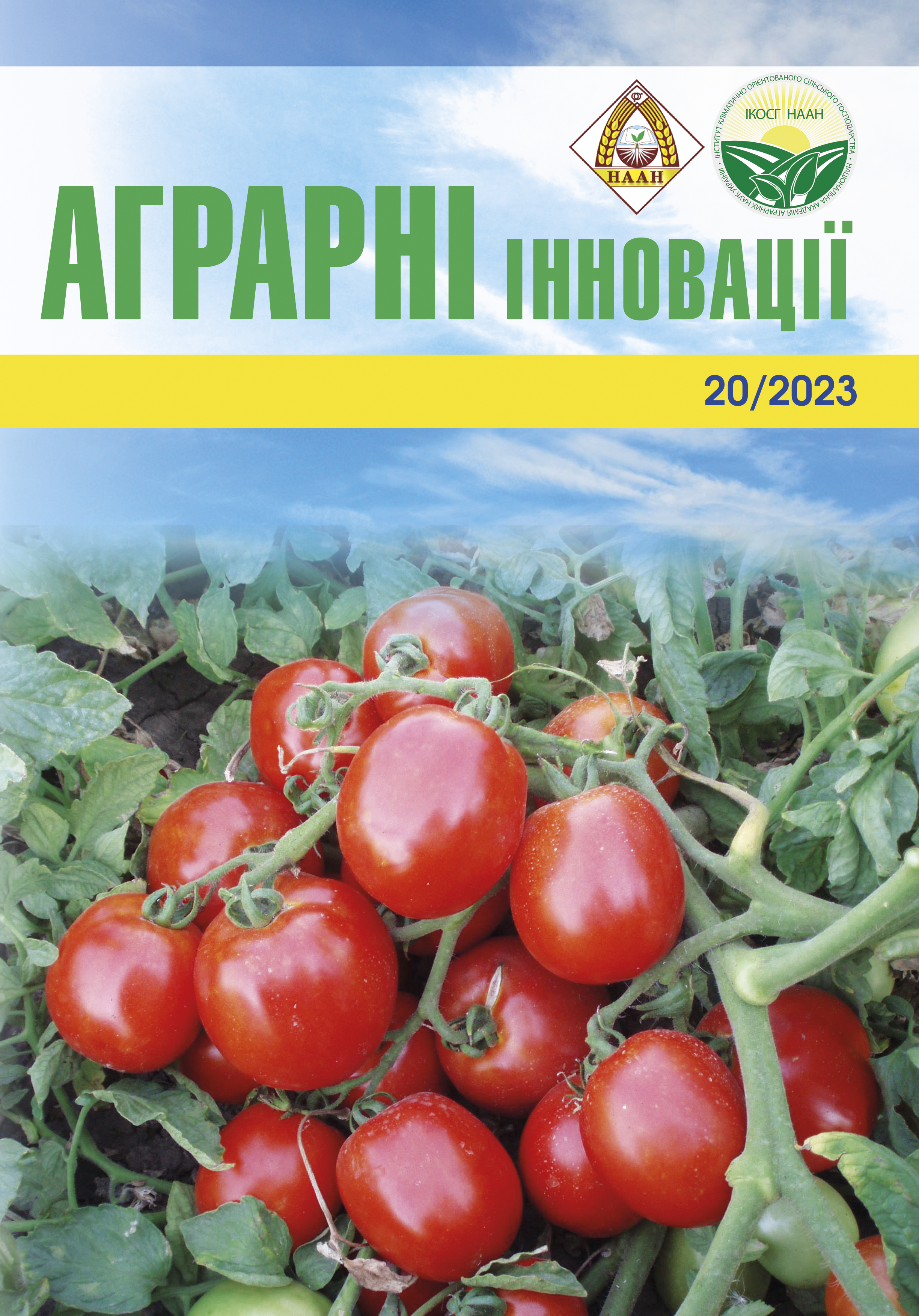Implementation of Agricultural Stress Index for dynamic drought assessment in croplands
Abstract
Purpose. The goal of the study was to assess the dynamics of ASI on the territory of Ukraine for the springsummer season in the period 1984–2022 according to official FAO data, presented on the ArcGIS Online platform, and to compare the correspondence between vulnerability to drought and direct agrometeorological indicators of drought, such as evapotranspiration and aridity index. Methods. Spatial data for ASI, presented by FAO on the ArcGIS Online GIS platform, were used. Meteorological indicators of evapotranspiration and aridity index were estimated according to the statistical data of regional hydrometeorological centers of Ukraine and the meteoblue database. Statistical evaluation was performed using the methods of Pearson correlation analysis and Mann-Kendall trend analysis. Results. It was established that the greatest adverse effect on the conditions of agricultural land in Ukraine for the period 1984-2022 was recorded for 1986, 2007 and 2003, when ASI was 36.7, 34.3 and 29.5%, respectively. The most arid regions during the studied period were the Crimea, Zaporizhzhia, Mykolaiv, and Kherson regions, where the average ASI was 17.30, 15.68, 15.27, and 15.07%, respectively. The relationship between meteorological indicators and ASI is almost absent or very weak (Pearson’s correlation coefficient in the range of -0.28...0.34 for evapotranspiration and -0.26...0.20 for the aridity index). The Mann-Kendall test did not reveal a statistically significant trend in the dynamics of the ASI in Ukraine. Conclusions. Based on the results of the study, it was established that the most arid years in Ukraine for the period 1984–2022 were 1986, 2007, and 2003. The Crimea, Zaporizhzhia, Mykolaiv, and Kherson regions suffer the most from the negative effects of the drought. No statistically significant relationship was found between the value of ASI and meteorological indicators of drought, such as evapotranspiration and aridity index. The assessment of the trend did not reveal a statistically reliable tendency to change in the cropland areas that will suffer from the adverse consequences of the drought.
References
2. Вожегова Р.А., Нетіс І.Т., Онуфран Л.І., Сахацький Г.І., Шарата Н.Г. Зміна клімату та аридизація Південного Степу України. Аграрні інновації. 2021. Вип. 7. С. 16–20. DOI: 10.32848/agrar.innov.2021.7.3
3. Vozhehova R. A. Water resources and food supply systems. Irrigated Agriculture. 2022. Vol. 78. P. 10–14. DOI: 10.32848/0135-2369.2022.78.2
4. Lykhovyd P. Irrigation needs in Ukraine according to current aridity level. Journal of Ecological Engineering. 2021. Vol. 22. No. 8. P. 11–18. DOI: 10.12911/22998993/140478
5. Łabędzki L., Bąk B. Meteorological and agricultural drought indices used in drought monitoring in Poland: a review. Meteorology Hydrology and Water Management. Research and Operational Applications. 2014. Vol. 2. No. 2. P. 3–13.
6. Van Hoolst R., Eerens H., Haesen D., Royer A., Bydekerke L., Rojas O., Li Y., Racionzer P. FAO’s AVHRRbased Agricultural Stress Index System (ASIS) for global drought monitoring. International Journal of Remote Sensing. 2016. Vol. 37. No. 2. P. 418–439. DOI: 10.1080/01431161.2015.1126378
7. Sedgwick P. Pearson’s correlation coefficient. Bmj. 2012. Vol. 345. P. e4483. DOI: 10.1136/bmj.e4483
8. Hamed K. H. Trend detection in hydrologic data: the Mann-Kendall trend test under the scaling hypothesis. Journal of Hydrology. 2008. Vol. 349. No. 3–4. P. 350–363. DOI: 10.1016/j.jhydrol.2007.11.009
9. Лиховид П. В. Аналіз агрокліматичних умов у Херсонській області за 2022 рік із використанням сучасних інформаційних технологій. Зрошуване Землеробство. 2023. Вип. 79. С. 47–51. DOI: 10.32848/0135-2369.2023.79.6






